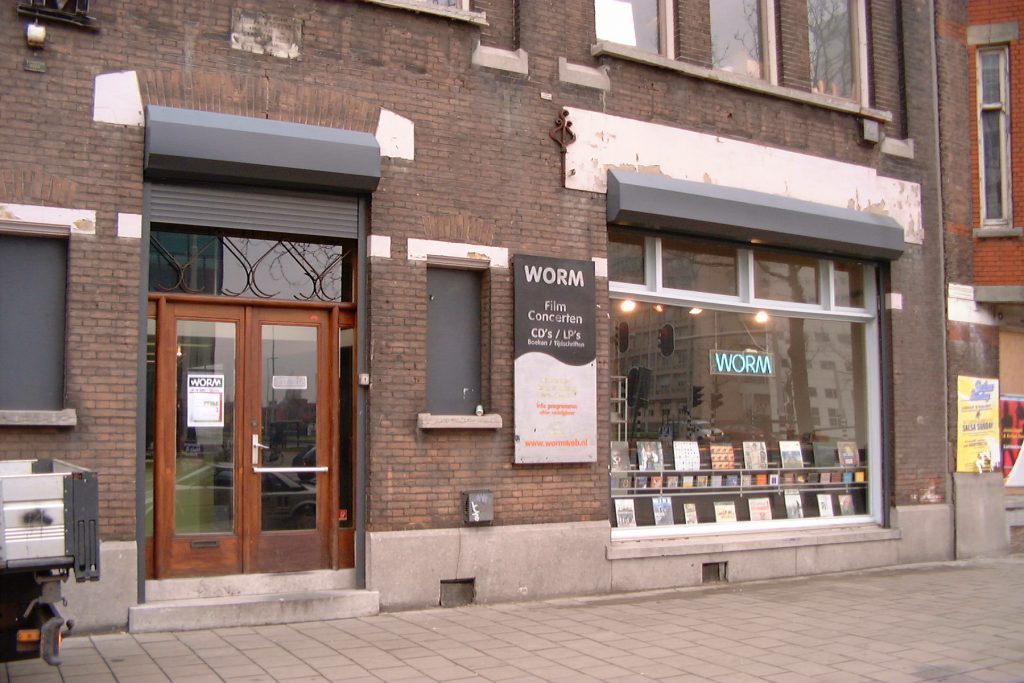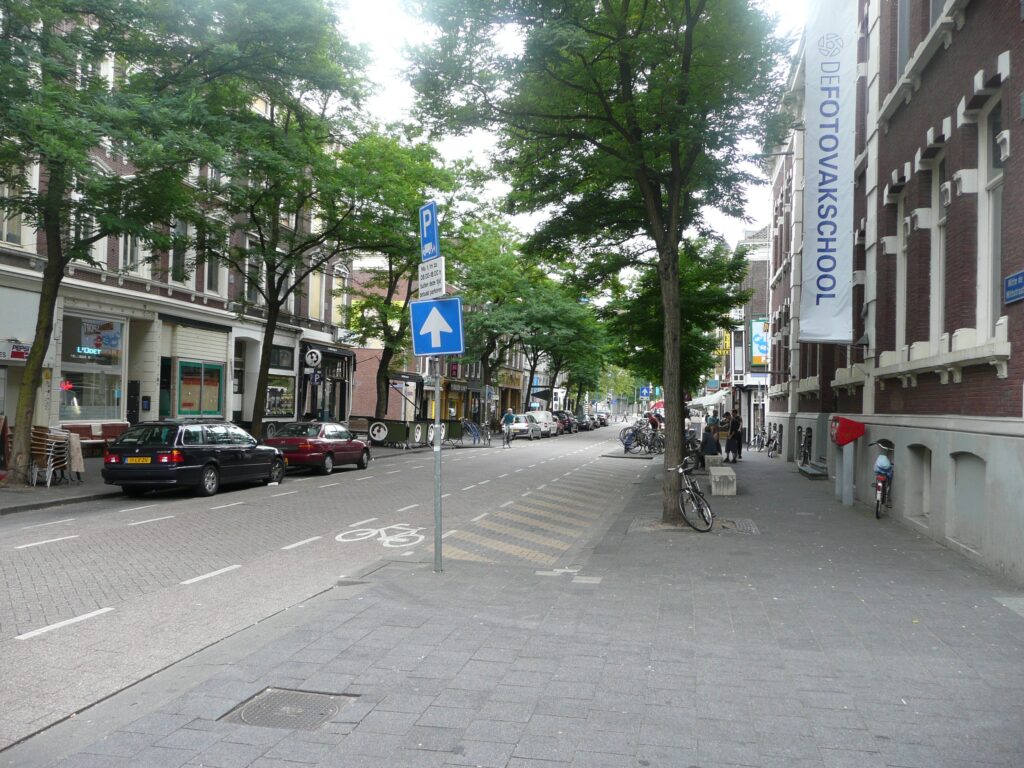Offbeat constructivism – WORM on the WdW
WORM and Melly are friends, neighbours and cultural partners. As participants in the Ministry of Education, Culture and Science (OCW) Theory of Change project, where we explore how we can measure our socio-cultural impact, (bringing benefit to Rotterdam along the way), we decided that working together is the way forward in understanding what we do, and how we can move forward as cultural institutions. This first meant understanding the street we are situated on, and our respective histories. WORM’s Richard Foster continues a series of articles with a short history of our street and our respective buildings.
Known currently for its very visible, and slightly offbeat presence on the Witte de Withstraat, WORM has a history that has been partly formed by its travels through the city of Rotterdam. WORM is an amalgamation of many things: in its lifetime it has soaked up collective local histories, such as newspaper printing and photography on the Witte de Withstraat, old dockland machinery from the Port, and other things, from the wide range of internationally sourced materials that make up the current building: one of the biggest reuse spaces in Europe. It wouldn’t be too far off the mark to say that WORM has been a cultural wanderer in the city: searching Rotterdam for a place where it can be itself.
WORM has its roots in the underground organisation, Dodorama, founded in 1994 as a new venue for contemporary music. It was located at the squatted Rochussenstraat 169. In 2000, after a couple of years of discussion, WORM officially came into existence thanks to a merger between Dodorama, film workshop Studio Een and Popifilm, which programmed film evenings.

WORM left Rochussenstraat in November 2003 and was homeless for a while, booking events in various venues all over Rotterdam, including some iconic, and now wholly restored or demolished locations. These were: the Calypso cinema, Nighttown, Poortgebouw, WaterFront, and the Las Palmas building. WORM’s shop was situated on the Mathenesserweg and in the later 2000s on the ground floor of the squatted Slaakhuys building. WORM finally had its own building at the former VOC warehouse at Achterhaven in Delfshaven. It stayed there from 2005 until the end of 2010.

Since late 2011, (the result of much discussion and lobbying), WORM has occupied the former building for the NDU, Nederlands Dagblad Unie on the Boomgaardsstraat (number 63 to be precise), along the Witte de Withstraat. The building was used by various Rotterdam cultural institutions, including the Nederlands Foto Instituut, which left in 2007. It currently houses the photography school, the NRC café, V2_ institute for unstable media, Scapino Ballet and several workplaces. WORM has its own entrance at Boomgaardstraat, number 71. From the summer of 2016, WORM opened two spaces further up the street, one the former garage at number 69 became WORM’s “not-so-very-white cube”, or “performance space *slash* gallery”. The other space, UBIK, was used by the Scapino ballet as a rehearsal space.
The Boomgaardsstraat complex is over 2000 square metres, and one of the biggest makerspaces in Europe. It hosts two events stages, fully operating analogue and digital cinema facilities, the S/ash Gallery exhibition space, the UBIK performance space, Radio WORM broadcasting studio, the WORM Pirate Bay media archive, WORM Sound Studios and Waveform Research Centre, the Precious meeting spot and the Filmwerkplaats analogue film laboratory. The Foyer and #Wunderbar café and terrace are the main recreation areas in the building.
It is also one of the biggest reuse projects in the country. This long cavernous, and slightly mysterious space was constructed to a design by SuperUse Studios in partnership with Atelier van Lieshout. The founding principle for the building is the use of recycled material, just as it was at the Achterhaven. Examples are found in the main concert area, where aircraft panels from Japan Airlines airplanes vie with the Skai leather seats from old NS intercity trains. The sliding benches in the foyer are made of cable-reel wood and storage cabinets. And the storage cabinets were in use when the building housed the Fotomuseum.

The story of Witte de Withstraat, Melly, and WORM illustrates that cultural impact is a two-way street. On one hand, creative institutions can revitalize and redefine an urban area, breathing life into old buildings, attracting communities, and sparking dialogue that resonates beyond their walls. On the other hand, the surrounding environment profoundly shapes those institutions’ evolution. From the echoes of history (a garden, a school, a printing press) to the voices of contemporary society, the street has continually informed what Melly and WORM do and how they do it.
As we embark on a joint impact research initiative, this shared history reminds us that measuring impact isn’t just about numbers and outcomes, but also about understanding relationships between an institution and its locale, between neighbors in a cultural ecosystem, and between the past and future. In the case of Melly and WORM, our shared impact is rooted in this rich interplay of place and purpose, collaboration and community. It sets a strong context for our ongoing exploration of how cultural institutions make a difference, and how we can continue to grow that difference together.
